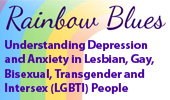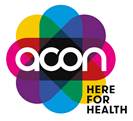What does the research tell us?
- The Private Lives 2 Report from 2011(published by Gay and Lesbian Health Victoria) had 3,835 respondents who identified as GLBT. Participants were asked if they had been disagnosed with or treated for a range of health conditions over the last 3 years. 30.5% respondents had identified depression and nearly 1/4 of all respondents reported having been diagnosed or treated for an anxiety disorder.
- National and international research estimates that the rate of suicide attempts for GLBT people are anywhere between 3.5 and 14 times higher than their heterosexual peers.
- Tranznation (2007), a report on the health and wellbeing of transgendered people in Australia and New Zealand, found that 1 in 4 repsondents reported suicidal thoughts in the previous 2 weeks before completing the survey.
The GBLT communities experience higher risk factors that result in poorer mental health outcomes. Commonly identified risk factors are:
- Homophobia/transphobia, stigma and discrimination at work, home, school or out in the community.
- Having to hide or change their behaviour for safety reasons, leading them to live a compromised life.
- The impact of living in a heternormative society, which does not embrace diversity.
- The life long experience of "coming out."
- Rejection by family of origin or peers due to sexuality or gender diversity.
- Reported higher levels of violence and verbal abuse (Liu and Mustanski 2012).
- Minority related stress particulary among GLBT people living in rural or remote areas.
- Negative experiences from health care providers.
These common experiences can lead to social isolation which can become a barrier to seeking help from friends or support services. A 2005 study by SANE Australia showed that loneliness was common among people who live with a mental illness and close realtionships were harder for them to maintain.
The use of alcohol and drugs
Another area of concern is the higher use of alcohol and other drugs throughout our communities.
A 2007 second Australian National Survey of Mental Health and Wellbeing published data on the prevalence and patterns of mental disorders among Australian men and women that highlighted the co existence of mental health issues and substance use problems throughout the general population. It also reported on the significantly higher use by same sex attracted men and women of illicit drugs such as cannabis, ecstacy, methamphetamine and cocaine.
- Research identified young people in particular as vulnerable, compared to the general population.
- This behavior can be an indicator of poorer mental health outcomes.





